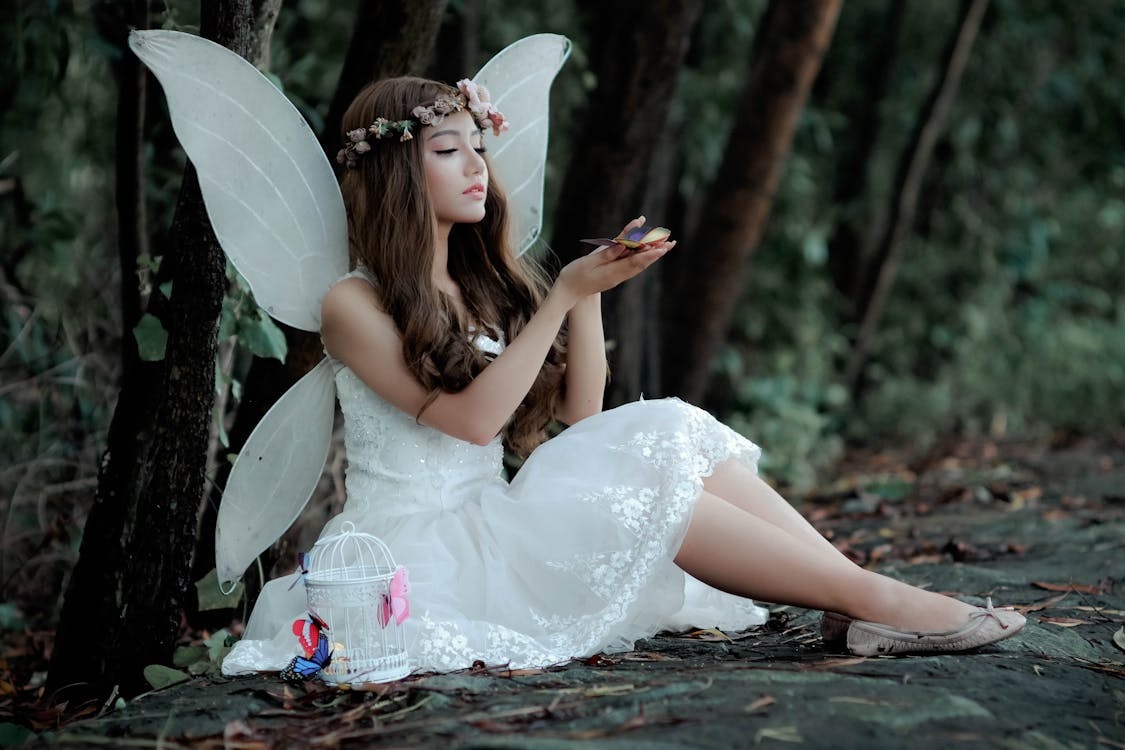Introduction
The Fae, often referred to as faeries or fairies, have long been an integral part of mythology, folklore, and fantasy across cultures worldwide. These ethereal beings, depicted as magical creatures capable of both benevolence and mischief, have captured human imagination for centuries. From the enchanting forests of Celtic legends to the mysterious realms of modern fantasy fiction, the Fae remains a source of intrigue and fascination. In this article, we delve into the origins, different types, powers, and cultural significance of the Fae.
Origins of the Fae in Mythology
The term “Fae” originates from the Old French word faerie, which refers to enchantment or magical beings. In various mythological traditions, the Fae are supernatural beings connected to nature and the unseen world. The most famous of these tales come from Celtic mythology, where fairies are often depicted as mystical beings living in the Otherworld, a realm separate from our own. In Irish and Scottish lore, these beings are also called sidhe or aos sí, believed to inhabit ancient mounds and hills.
While Celtic mythology offers one of the most detailed accounts of the Fae, similar creatures appear in cultures around the world. For example:
- Norse mythology features elves or álfar, who share similarities with the Fae as otherworldly beings of great beauty and power.
- Greek mythology includes nymphs, female spirits of nature who personify natural features like rivers, trees, and mountains, mirroring the Fae’s connection to nature.
- Slavic folklore features creatures such as rusalka (water spirits) and domovoi (household spirits), which, like the Fae, are known for their trickster qualities.
Types of Fae
The Fae are a diverse group, and different folklore traditions categorize them into various types. Some are more benign and helpful, while others can be downright dangerous. Here are some of the most commonly recognized categories of Fae:
- Seelie and Unseelie Courts In Scottish folklore, Fae are often divided into two courts: the Seelie and Unseelie. The Seelie Court is composed of fairies known for their kindness and benevolence, often helping humans in need. In contrast, the Unseelie Court includes darker, more malevolent fairies who take pleasure in causing harm and mischief. This division highlights the dual nature of the Fae, capable of both good and evil.
- Nature Spirits Many Fae are deeply connected to natural elements. Examples include:
- Dryads, tree spirits found in Greek and Roman mythology, who guard forests and natural landscapes.
- Water Fae, such as naiads (freshwater nymphs) or kelpies (water horses from Scottish folklore), which inhabit rivers, lakes, and oceans.
- Household Fairies In folklore, certain Fae are believed to live close to humans and assist them with household tasks. The most famous of these are:
- Brownies, small, helpful creatures that assist with chores in exchange for offerings of food, typically milk or bread.
- Leprechauns, mischievous fairies from Irish mythology, known for hoarding gold and tricking humans with their riddles and wit.
- Changelings Changelings are a darker aspect of Fae lore. In many traditions, it is believed that fairies would steal human babies and leave behind a fairy child, known as a changeling. This idea is common in European folklore and is often associated with the belief that fairies envy human families or wish to protect their own kind by raising them in the human world.
Powers and Abilities of the Fae
The Fae are often endowed with magical abilities that set them apart from humans. These powers vary depending on the type of fairy and the cultural mythology in which they appear. Some of the common powers attributed to the Fae include:
- Shapeshifting One of the most common abilities of the Fae is shapeshifting. Many fairies, particularly water Fae like kelpies, can take on the form of humans, animals, or even inanimate objects. This power allows them to move undetected or play tricks on unsuspecting humans.
- Invisibility The ability to become invisible or exist in a parallel realm is another key trait of the Fae. In many traditions, fairies live in a hidden world that is accessible only to those with magical knowledge or through specific gateways. Humans may accidentally stumble into these realms and become trapped or enchanted by the Fae.
- Enchantments and Glamour Fairies are known for their use of enchantments, often casting spells to manipulate the minds and perceptions of humans. A common ability is glamour, the power to create illusions or change appearances to deceive others. For example, a fairy might use glamour to make a simple object appear as treasure or to mask their true form from mortals.
- Flight In some folklore, fairies possess the ability to fly, often depicted with delicate wings resembling those of butterflies or dragonflies. This image of winged fairies has become iconic in popular culture, though not all Fae in traditional folklore are winged.
- Control Over Nature Since the Fae are often associated with nature, many are believed to have dominion over natural elements. They may cause storms, summon winds, or bring fertility to crops. This connection to nature also makes them protective of natural environments, with some myths warning that damaging a fairy’s home—such as cutting down a tree inhabited by a dryad—could result in severe consequences for the offender.
The Fae in Popular Culture
Over time, the Fae have found their way into modern fiction, literature, and media, where they continue to captivate audiences. From classic fairy tales to contemporary fantasy novels, the Fae are often portrayed as complex beings with their own rules, motivations, and societal structures. Some notable representations of the Fae include:
- Shakespeare’s “A Midsummer Night’s Dream” In this iconic play, Shakespeare introduces fairies like Oberon, Titania, and Puck, who manipulate human affairs with their magic. The portrayal of the Fae in this play captures their mischievous and unpredictable nature.
- J.M. Barrie’s “Peter Pan” The character of Tinker Bell, a small fairy who helps Peter Pan, is one of the most recognizable fairies in popular culture. Tinker Bell’s loyalty to Peter and her fiery personality are emblematic of the Fae’s diverse nature.
- Modern Fantasy Fiction Authors like Holly Black, Sarah J. Maas, and Cassandra Clare have incorporated Fae characters into their fantasy series, often blending traditional folklore with new interpretations. These modern depictions often explore the political intrigue, magic, and moral ambiguity of the Fae world, adding new layers to their mythos.
- Urban Fantasy and Media The Fae have also made their way into urban fantasy, where they are often portrayed as beings living among humans, hidden in plain sight. TV shows like True Blood and Shadowhunters feature Fae characters, emphasizing their beauty, magic, and often dangerous allure.
The Rules of Engagement with the Fae
Folklore warns humans to be cautious when dealing with the Fae. Engaging with them can be dangerous, as they are known to be quick to anger and may take offense easily. Here are some traditional guidelines for interacting with fairies:
- Do Not Offend the Fae Fairies can be easily offended by disrespectful behavior. It is said that damaging their homes, such as cutting down fairy trees or building over fairy mounds, can lead to curses or misfortune.
- Offer Gifts Carefully In many traditions, offering gifts to the Fae can bring good fortune, but only if done properly. It is common to leave food or small tokens, such as milk or honey, as an offering to fairies. However, one must be careful not to thank them directly, as this can be seen as an insult.
- Be Cautious with Fairy Food Eating food offered by the Fae is a recurring theme in folklore, often with disastrous consequences. Accepting food from fairies can bind a person to their realm or cause them to forget their human life entirely.
Conclusion
The Fae continue to enchant and mystify people across generations, transcending boundaries of time and culture. Whether they are seen as benevolent helpers, mischievous tricksters, or dangerous entities, fairies embody the magic and mystery that permeate human imagination. From ancient folklore to modern fantasy, the Fae remain an enduring symbol of nature, magic, and the unknown. As we navigate the world of myths and legends, the Fae remind us of the delicate balance between humanity and the supernatural, urging us to tread carefully in the realms we cannot fully understand.

